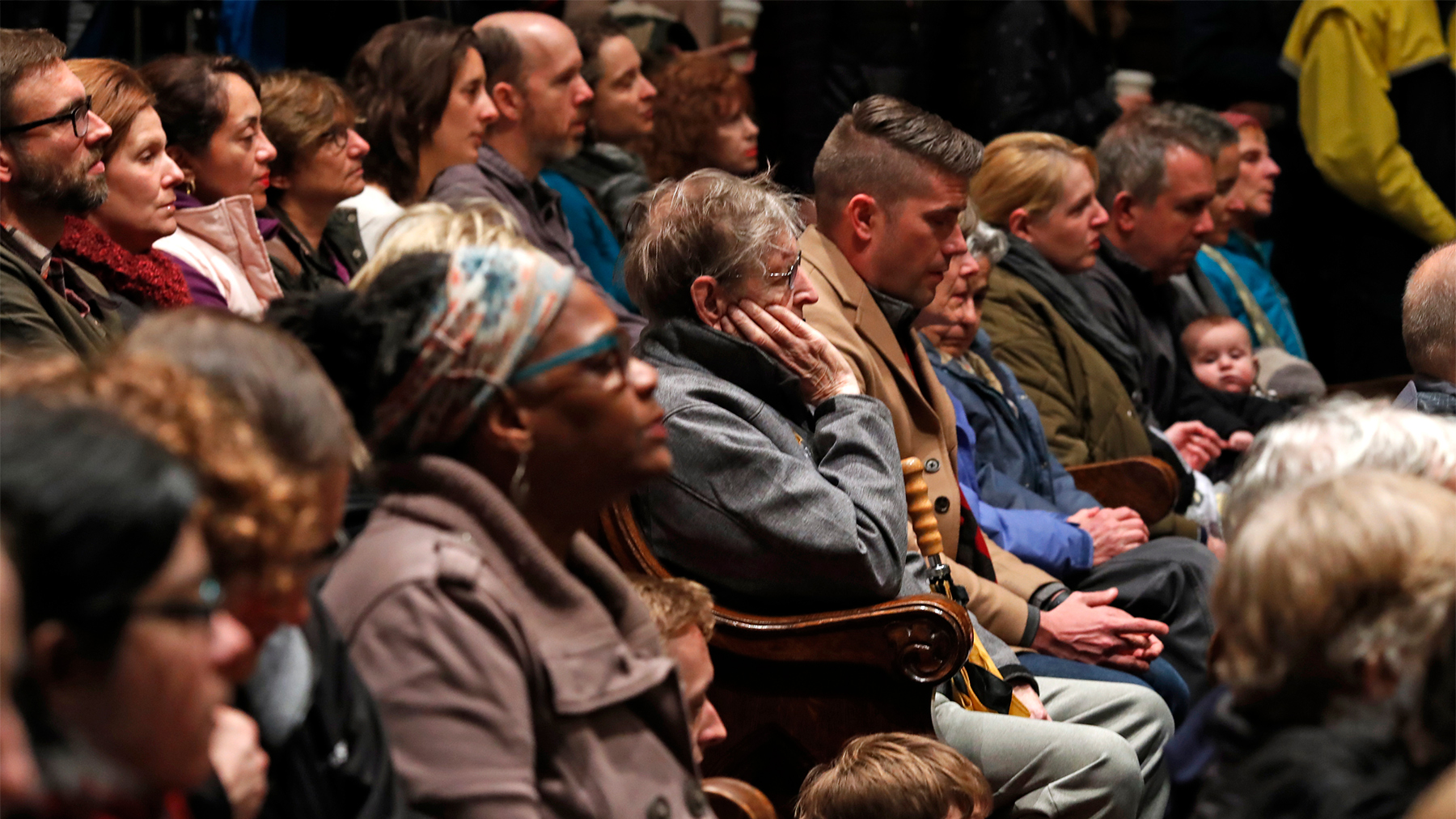Last weekend was marked by another horrifying attack on a congregation. Worshippers at a synagogue in Poway, California, were celebrating the last day of Passover when a gunman, apparently influenced by online white supremacist propaganda, opened fire.
The attack was far from an isolated incident. As Rabbi Jason Kimelman-Block explained in The Hill, the attack was part of a larger “rise in white nationalist violence that threatens all manner of communities and places of worship in the United States and around the world, from synagogues to mosques to Sikh temples to black churches … All are flashpoints in a larger story.”
Our nation has a shameful history of such attacks on houses of worship.
Most Americans know of the 1963 bombing of the 16th Baptist Street Church in Birmingham, Alabama, when Ku Klux Klan members murdered four young girls. Black churches suffered countless arsons, bombings, and attacks during the civil rights era. Synagogues and mosques also suffered such attacks. In the 1990s, a gunman attacked a Jewish Community Center in Los Angeles, and a series of fire-bombings hit black churches across the South.
In the week following the September 11, 2001, terrorist attack, there were 25 attacks on mosques including vandalism, arson, gunshots, or physical assaults on worshippers. In 2015, the attack on worshippers in Charleston, South Carolina, left nine people dead.
In the last six months alone, we saw fatal attacks on worshippers at the Tree of Life synagogue in Pittsburgh, a string of arsons of black churches across the South, and the attack at a synagogue in Poway earlier this week. This violence, however, is not confined to the United States, as the attack on the Al Noor mosque in New Zealand demonstrated.
Within the United States, the SPLC found that white nationalist groups had a 50 percent increase in 2018.
Last week, SPLC Senior Research Analyst Cassie Miller spoke at a congressional briefing on hate crimes and the rise of white nationalism. Miller noted that “at a time when it is so obvious that white nationalism is surging in the United States and it’s leading to acts as grotesque as people being murdered in their houses of worship, this administration is choosing to divert from programs and personnel that might actually halt the process of radicalization and save lives.”
We need law enforcement – from our local police precincts to the FBI – to improve reporting on hate crimes, enforcement of existing hate crime legislation, and the staffing of departments focused on the prevention of hate crimes. We need tech companies to step up and do their part to stop the spread of hate on their platforms.
And we need our elected officials to take these threats seriously.
Last month, the House Judiciary Committee held a hearing on “Hate Crimes and the Rise of White Nationalism.” Despite the alarming statistics, some Republican members attempted to undermine the grave concerns that FBI Director Christopher Wray had outlined to Congress only the week before about the “persistent, pervasive threat” of white nationalist violence.
Earlier this week, civil rights icon and U.S. Rep. John Lewis took to the House floor to condemn both the attack in Poway as well as Congress’ inaction in response to the threat of white nationalist attacks on houses of worship.
He summed up the issue with one simple question:“How many lives must we lose before we decide there’s not any room in America for hate?”
Photo by Gene J. Puskar/AP Images
SPLC’s Weekend Reads are a weekly summary of the most important reporting and commentary from around the country on civil rights, economic and racial inequity, and hate and extremism. Sign up to receive Weekend Reads every Saturday morning.



